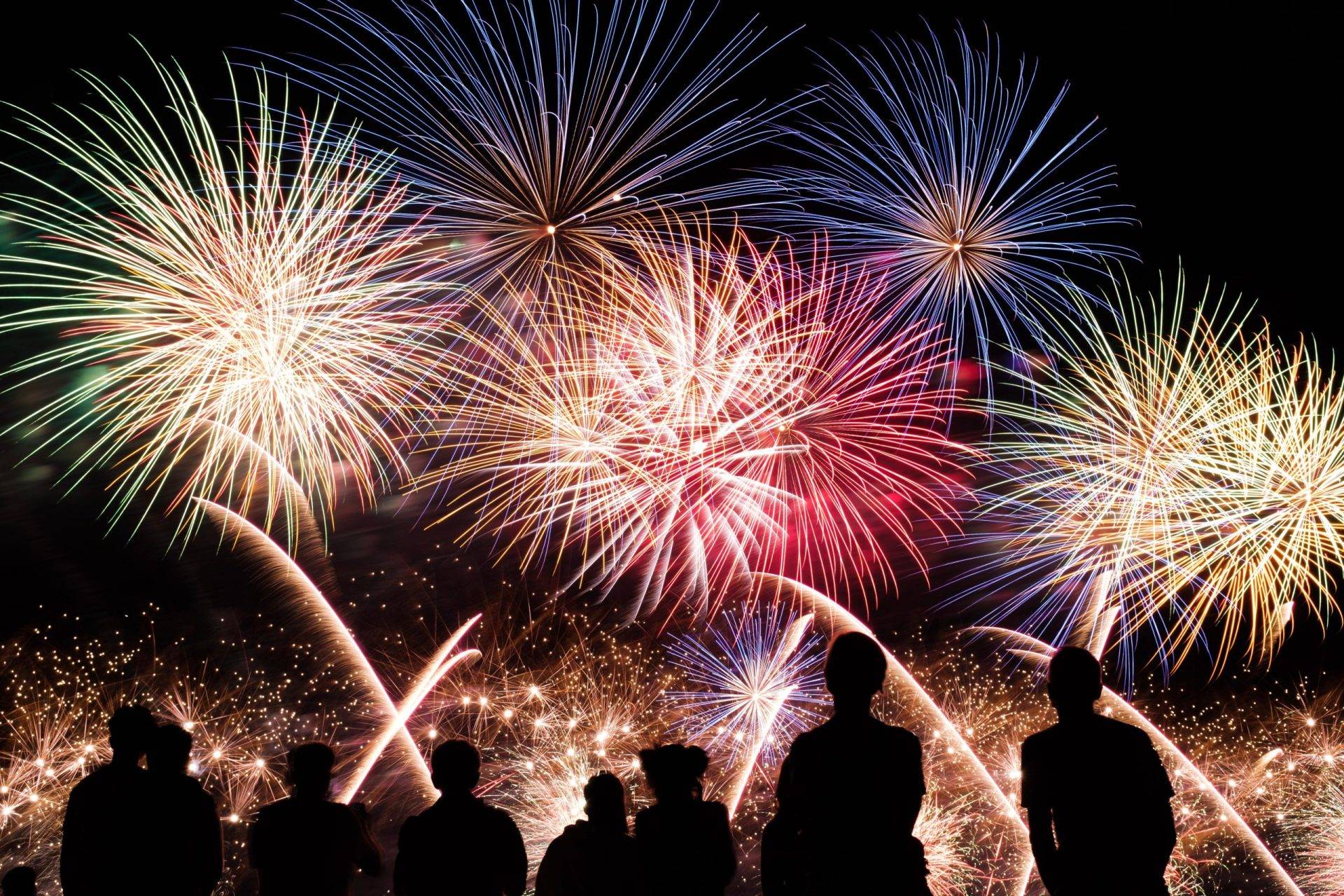New Years Fun Facts

New year means different things to different people, depending on where you are from, the calendar used/adopted in your country as well as the dominant religion in your country. But for the majority of the world New Year starts from the 1st of January of every year and that is one prominent fact everyone knows about New Year. In fact, when you say New Year what comes to people’s mind is 1st of January, but there are actually so many facts about New Years that many people do not know. These new years facts go deeper than just the day on which every new year starts, it covers a lot of information about the beginning of the year that you most likely do not know.
In fact, most people do not know why New Year is celebrated on the 1st of January, those are some of the intriguing new year fun facts that would be shared in this facts list.
I have made research and gotten information from different cultures, countries and people on the topic of the new year and have put them together in this list of facts about New Years. If you are someone that loves to read facts and want to get yourself engrossed in these facts about new years, then the following facts list is what you have been waiting for.
New Year Fun Facts
- New Year is celebrated on January 1st every year.
- The celebration of New Year has been around for thousands of years.
- The ancient Babylonians were the first to celebrate New Year.
- New Year’s Day was originally celebrated on the first new moon after the vernal equinox.
- The Gregorian calendar, which is used in most parts of the world today, was adopted in 1582.
- The first country to adopt the Gregorian calendar was Italy.
- In some cultures, New Year’s Day is celebrated on a different date.
- In the Chinese culture, New Year’s Day is celebrated on a different day each year.
- The Chinese New Year celebration lasts for 15 days.
- New Year’s Day is a national holiday in many countries.
- The celebration of New Year’s Eve is often more popular than New Year’s Day.
- The Times Square Ball Drop in New York City is one of the most famous New Year’s Eve celebrations in the world.
- The ball drop tradition in Times Square began in 1907.
- The ball used in the Times Square Ball Drop weighs nearly 12,000 pounds.
- The first New Year’s Eve celebration in Times Square was held in 1904.
- The song “Auld Lang Syne” is often played at New Year’s Eve celebrations.
- “Auld Lang Syne” is a Scottish poem that was written by Robert Burns in 1788.
- The lyrics to “Auld Lang Syne” roughly translate to “times gone by”.
- Champagne is a popular drink to celebrate New Year’s Eve with.
- The tradition of drinking champagne on New Year’s Eve began in the 19th century.
- In Spain, it is tradition to eat 12 grapes at the stroke of midnight on New Year’s Eve.
- The 12 grapes represent the 12 months of the year.
- Fireworks are a common way to celebrate New Year’s Eve.
- The tradition of setting off fireworks on New Year’s Eve dates back to ancient times.
- In some countries, it is tradition to burn effigies of famous people on New Year’s Eve.
- In Ecuador, it is tradition to burn effigies of politicians on New Year’s Eve.
- The first recorded New Year’s resolution was made by the Babylonians in 2000 BC.
- The tradition of making New Year’s resolutions is still popular today.
- The most common New Year’s resolutions are related to health and fitness.
- The phrase “New Year, new me” is often used as motivation for making New Year’s resolutions.
- In Italy, it is tradition to wear red underwear on New Year’s Eve for good luck.
- In Brazil, it is tradition to wear white clothing on New Year’s Eve for good luck.
- In Japan, it is tradition to eat soba noodles on New Year’s Eve for good luck.
- The tradition of eating black-eyed peas on New Year’s Day for good luck originated in the southern United States.
- The first football game on New Year’s Day was played in 1902.
- The Rose Bowl, which is played on New Year’s Day, is the oldest bowl game in college football.
- The Super Bowl, which is played in late January or early February, is often considered the biggest sporting event of the year.
- In Scotland, New Year’s Day is known as “Hogmanay”.
- Hogmanay celebrations often involve fire festivals and torchlight processions.
- The Scottish Hogmanay tradition of “first-footing” involves visiting friends and familyand bringing gifts such as coal, whiskey, or shortbread.
- In Greece, it is tradition to hang an onion on the front door on New Year’s Eve for good luck.
- In Denmark, it is tradition to smash plates on friends’ and family’s doors as a sign of affection.
- The New Year’s Eve celebration in Berlin, Germany features a fireworks display and the release of thousands of balloons.
- In Colombia, it is tradition to walk around the block with an empty suitcase on New Year’s Eve for good luck in travel.
- In Russia, it is tradition to write down a wish, burn it, and then drink the ashes mixed with champagne on New Year’s Eve.
- In Turkey, it is tradition to wear red underwear on New Year’s Eve for good luck in love.
- In Argentina, it is tradition to eat a grape for each stroke of midnight for good luck in the coming year.
- The New Year’s Eve celebration in Sydney, Australia features a fireworks display over the Sydney Harbour Bridge.
- In the Philippines, it is tradition to wear polka dots on New Year’s Eve for good luck and prosperity.
- The New Year’s Eve celebration in Rio de Janeiro, Brazil features a fireworks display on Copacabana Beach.
- In Peru, it is tradition to wear yellow underwear on New Year’s Eve for good luck in money and success.
- In Hungary, it is tradition to eat lentil soup on New Year’s Day for good luck and prosperity.
- The New Year’s Eve celebration in London, England features a fireworks display over the River Thames.
- In Estonia, it is tradition to eat seven meals on New Year’s Eve for good luck.
- In Venezuela, it is tradition to wear new, brightly colored underwear on New Year’s Eve for good luck and love.
- In the Netherlands, it is tradition to eat oliebollen, a type of doughnut, on New Year’s Eve.
- The New Year’s Eve celebration in Las Vegas, Nevada features a fireworks display over the Las Vegas Strip.
- In Romania, it is tradition to wear red on New Year’s Eve for good luck and prosperity.
- In Finland, it is tradition to predict the future by casting molten tin into water on New Year’s Eve.
- The New Year’s Eve celebration in Paris, France features a fireworks display over the Eiffel Tower.
- In Switzerland, it is tradition to drop ice cream on the floor on New Year’s Eve for good luck and abundance.
- In Mexico, it is tradition to eat 12 grapes at the stroke of midnight on New Year’s Eve for good luck in the coming year.
- In the United States, the New Year’s Eve celebration in New Orleans, Louisiana features a dropping fleur-de-lis symbolizing the start of the new year.
- In South Africa, it is tradition to throw old furniture out of windows on New Year’s Eve to signify letting go of the past year.
- In Belgium, it is tradition to exchange kisses at the stroke of midnight on New Year’s Eve.
- The New Year’s Eve celebration in Hong Kong, China features a fireworks display over Victoria Harbour.
- In Sweden, it is tradition to eat a smorgasbord on New Year’s Eve.
- In India, it is tradition to light fireworks and set off firecrackers on New Year’s Eve.
- In Norway, it is tradition to eat rice pudding with an almond hidden inside on New Year’s Eve.
- The New Year’s Eve celebration in Dubai, United Arab Emirates features a fireworks display over the Burj Khalifa.



